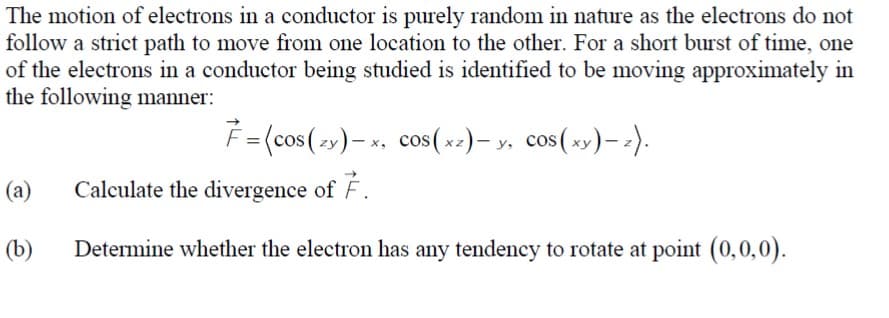The motion of electrons in a conductor is purely random in nature as the electrons do not follow a strict path to move from one location to the other. For a short burst of time, one of the electrons in a conductor being studied is identified to be moving approximately in the following manner: (a) (b) 7=(cos(zy)-x, cos(xz)- y, cos(xy)-z). Calculate the divergence of 7. Determine whether the electron has any tendency to rotate at point (0,0,0).
The motion of electrons in a conductor is purely random in nature as the electrons do not follow a strict path to move from one location to the other. For a short burst of time, one of the electrons in a conductor being studied is identified to be moving approximately in the following manner: (a) (b) 7=(cos(zy)-x, cos(xz)- y, cos(xy)-z). Calculate the divergence of 7. Determine whether the electron has any tendency to rotate at point (0,0,0).
Related questions
Question

Transcribed Image Text:The motion of electrons in a conductor is purely random in nature as the electrons do not
follow a strict path to move from one location to the other. For a short burst of time, one
of the electrons in a conductor being studied is identified to be moving approximately in
the following manner:
(a)
(b)
7=(cos(zy)-x, cos(xz) — y, cos(xy) - z).
Calculate the divergence of 7.
Determine whether the electron has any tendency to rotate at point (0,0,0).
Expert Solution
This question has been solved!
Explore an expertly crafted, step-by-step solution for a thorough understanding of key concepts.
Step by step
Solved in 4 steps
